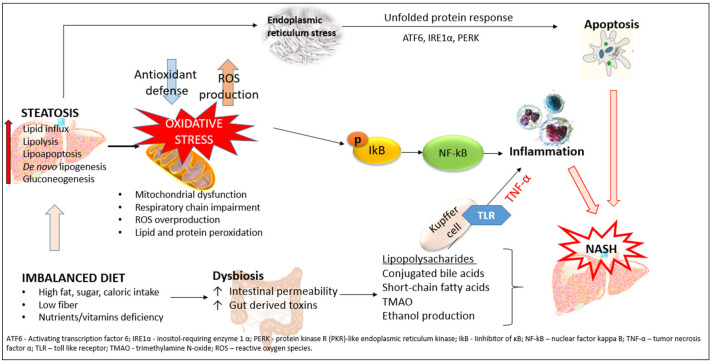Figure 1.
Pathogenic mechanisms involved in steatosis progression to NASH. Accumulating fatty acids causes respiratory chain disruption, mitochondrial impairment, and reactive oxygen species (ROS) overproduction, suggesting that oxidative stress is the main event in NASH development. ROS and lipid peroxidation activate the endoplasmic reticulum stress response and cause apoptosis in the case of inadequate unfolded protein response. ROS induce inflammation in an NF-κB-dependent manner with subsequent release of cytokines and chemokines. An additional factor that contributes to NASH development is dysbiosis and increased intestinal permeability. This leads to increased release of lipopolysaccharides and other metabolites into the portal circulation, which activates Kupffer cells and promotes inflammation and NASH.

